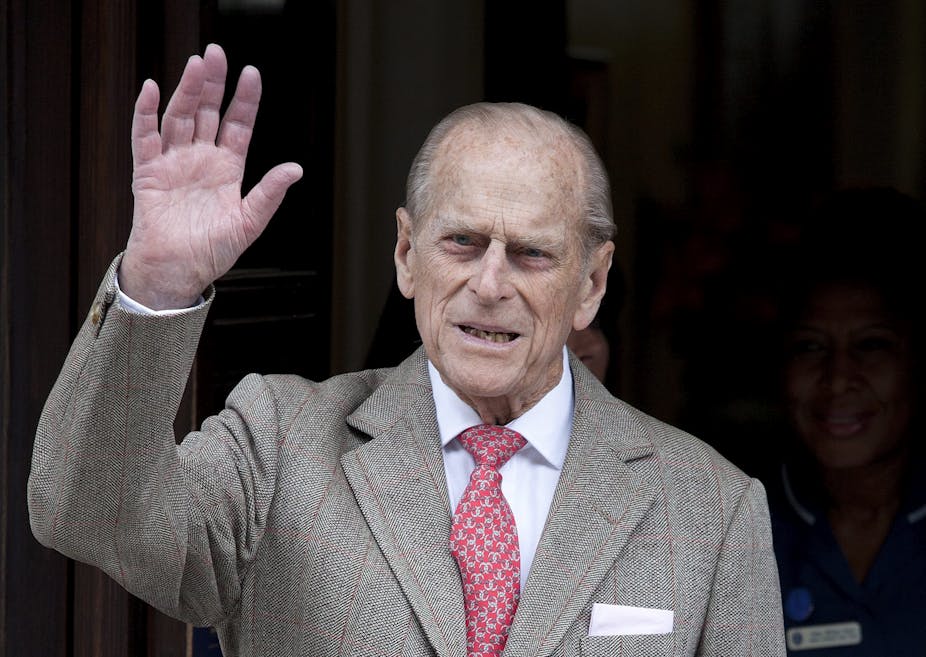Prime Minister Tony Abbott caused quite a stir when he re-established the appointment of knights and dames under the Order of Australia early in 2014. For this to occur, no law needed to be passed. Instead, Her Majesty The Queen, on the recommendation of the Prime Minister, amended the Letters Patent for the Order of Australia awards.
In 2015, it was the knighthood given to the Duke of Edinburgh, Prince Philip, that proved for many to be the Australia Day barbecue stopper. But how is it that Prince Philip – someone who is not an Australian citizen – is awarded a knighthood? Can foreigners even be awarded honours under the Order of Australia?
To answer these questions, it is necessary to delve into the language of the Letters Patent.
What are Letters Patent?
Letters Patent are a legal document signed by the Monarch (or the Governor-General) that grants some sort of right, status or title.
When a royal commission is established, the appointment of the royal commissioner is done so by Letters Patent. One recent example is the appointment of former High Court judge Dyson Heydon as the royal commissioner to investigate alleged corruption within trade unions. Some not-so-recent examples are the letters patent signed by the monarch establishing each of the Australian colonies during the 1800s.
The Order of Australia – our system for recognising the achievements of outstanding Australians – was established by Letters Patent in 1975. Letters Patent are unique in that the document is approved without reference to parliament. This is how knighthoods and damehoods were re-established without the involvement of parliament. Abbott simply instructed the Queen to amend the letters patent.
How are knights and dames appointed?
Knights and dames are essentially “captain’s picks” of the prime minister. Abbott said he “consulted with the chairman of the [Australia Day] Council for the Order of Australia and … with the Governor-General”.
Appointments are made:
… with the approval of the Sovereign on the recommendation of the Prime Minister, by Instrument signed by the Governor-General.
To understand the appointment process it is necessary to have a close look at the clauses in the current Letters Patent.
Clause 11 of the Letters Patent states that:
Australian citizens … are eligible to be appointed to the Order.
It also allows non-citizens to be “appointed to the Order as honorary members”. In short, it establishes two categories of eligibility.
There are also important clauses that relate specifically to appointing knights and dames. Clause 11A(1) states that:
Appointments as Knights or Dames, or honorary Knights or Dames, in the General Division shall be made for extraordinary and pre-eminent achievement and merit in service to Australia or to humanity at large.
The other important clause is 11A(2), which deals with non-citizens. It qualifies the previous clause by stating that:
Notwithstanding subsection (1), a distinguished person who is not an Australian citizen may be appointed as an honorary Knight or Dame … where it is desirable that the person be honoured by Australia.
What is unclear from the wording of these clauses is whether non-Australian citizens can only be given honorary knighthoods. On one reading of the clauses, non-citizens can only be given honorary knighthoods. An alternative view is that while this may be the sense of the clause, it is not mandatory: that is, non-citizens may also be awarded the “ordinary” knighthood or damehood.
There is no mention that Prince Philip’s award is an honorary appointment. This raises the question of whether Prince Philip’s award should be viewed solely as “honorary”. However, the distinction is important.
The distinction of “honorary” knights and dames
Why does it matter whether Prince Philip’s award was “honorary” or not? Only four knights and dames can be appointed each year. However, this limitation of four per year does not include “honorary” knights and dames.
If Prince Philip’s award was not an honorary appointment, it has taken the award away from an Australian. If Prince Philip’s was an honorary appointment – and this fact was omitted from the list released on Australia Day – it highlights that while only four Australians can receive knighthoods or damehoods, there is no limit on the number of appointments that the prime minister could make to people who are not Australian citizens. The prime minister could start handing out honorary knighthoods or damehoods to foreign leaders left, right and centre.
The 2015 Australia Day honours may be remembered for many reasons. However, the show-stopper was the decision to add a knighthood to Prince Philip’s long list of titles. We can hardly wait for the Queen’s Birthday honours list.

